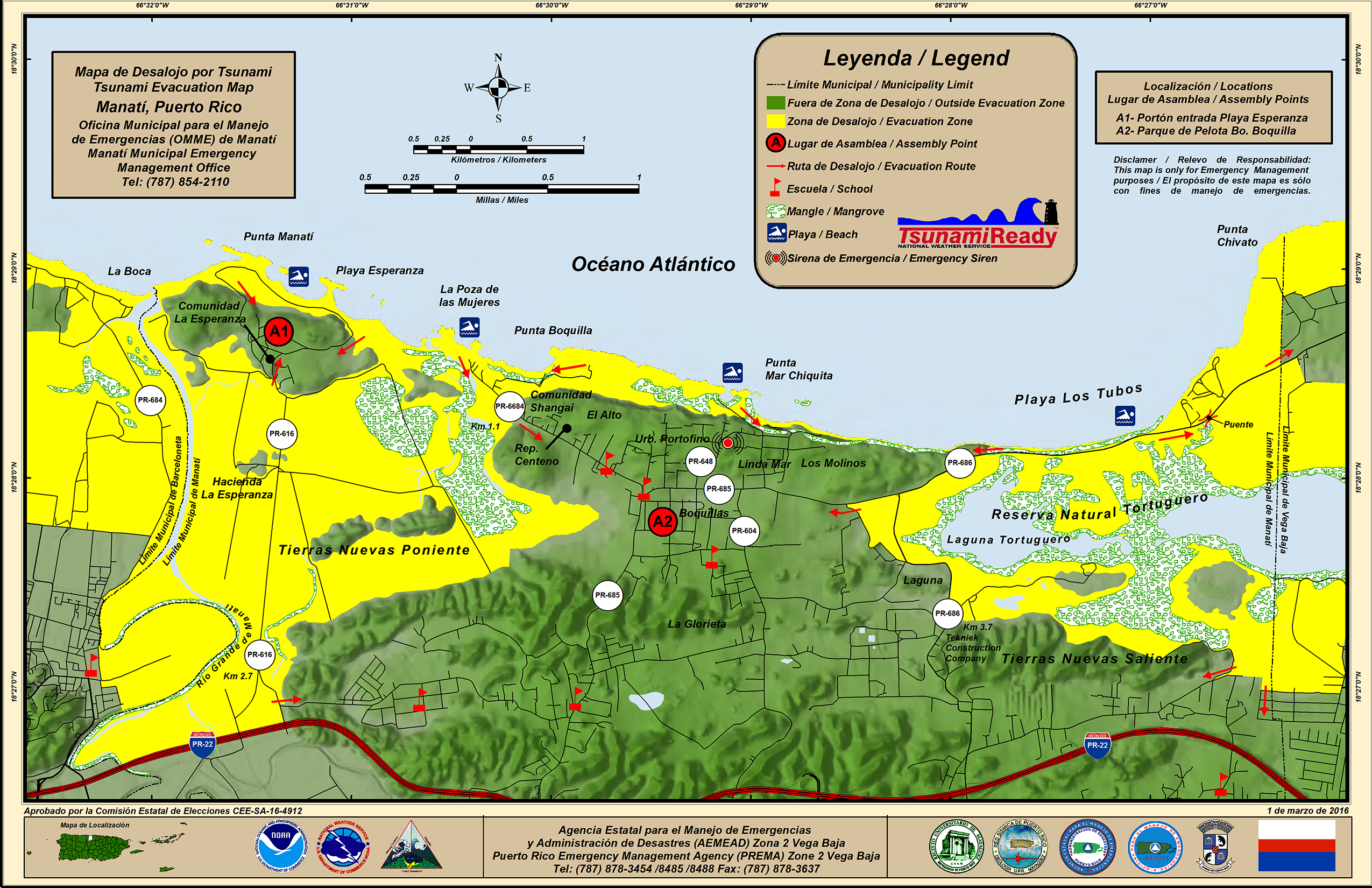6.4-Magnitude Earthquake Strikes San Juan, Puerto Rico; No Tsunami Warning Issued
A 6.4-Magnitude Earthquake Strikes San Juan, Puerto Rico; No Tsunami Warning Issued - Did you feel that? A powerful 6.4-magnitude earthquake struck the southern coast of Puerto Rico on Tuesday, January 7, 2020, at 4:24 a.m. local time (AST), according to the United States Geological Survey (USGS).
Editor's Notes: This piece was published in January 2020, and some information may be outdated. For the most up-to-date information on the earthquake, please refer to official sources.
With our team of experts doing some analysis, digging through hours of footage, and gathering insights from affected individuals, we put together this "6.4-Magnitude Earthquake Strikes San Juan, Puerto Rico; No Tsunami Warning Issued" guide to help provide you with a comprehensive insight on this event.
Key differences or Key takeways
| Before Earthquake | During Earthquake | After Earthquake | |
|---|---|---|---|
| What to do | Stay calm and follow instructions from local authorities. | Drop to the ground, take cover under a sturdy table or desk, and hold on until the shaking stops. | Check for injuries, damage to your home, and downed power lines. |
| What not to do | Do not run outside during an earthquake. | Do not stand in doorways or under windows. | Do not use elevators. |
Transition to main article topics
FAQ: 6.4-Magnitude Earthquake in San Juan, Puerto Rico
On Tuesday, January 7, 2020, a magnitude 6.4 earthquake struck the southern coast of Puerto Rico. The quake was felt across the island and caused damage to buildings and infrastructure. There were no reports of injuries.

Arecibo and san juan puerto rico map - racever - Source racever.weebly.com
Question 1: What caused the earthquake?
The earthquake was caused by the movement of two tectonic plates, the Caribbean plate and the North American plate. The Caribbean plate is moving eastward relative to the North American plate, and the earthquake occurred at the boundary between these two plates.
Question 2: How strong was the earthquake?
The earthquake had a magnitude of 6.4, which is considered to be a strong earthquake. It was the strongest earthquake to hit Puerto Rico in over 100 years.
Question 3: Was there a tsunami warning issued?
No, there was no tsunami warning issued. Earthquakes in the Caribbean Sea do not typically generate tsunamis.
Question 4: What damage was caused by the earthquake?
The earthquake caused damage to buildings and infrastructure across Puerto Rico. The most significant damage occurred in the southern part of the island, where several buildings collapsed.
Question 5: Are there any aftershocks expected?
Yes, aftershocks are expected following the earthquake. Aftershocks are smaller earthquakes that occur after the main earthquake.
Question 6: What should I do if I feel an aftershock?
If you feel an aftershock, you should drop to the ground, take cover under a sturdy table or desk, and hold on until the shaking stops.
Summary: The 6.4-magnitude earthquake that struck Puerto Rico was a strong earthquake that caused damage to buildings and infrastructure. No tsunami warning was issued, but aftershocks are expected. If you feel an aftershock, you should drop to the ground, take cover under a sturdy table or desk, and hold on until the shaking stops.
Next Article Section: The Impact of the Earthquake on Puerto Rico
Tips
Before, during, and after an earthquake, follow these tips to help reduce your risk of injury and damage:
6.4-Magnitude Earthquake Strikes San Juan, Puerto Rico; No Tsunami Warning Issued

Clarion Hotel Casino, San Juan, Puerto Rico Chip - Chipper Club - Source chipper.club
Tip 1: DROP, COVER, and HOLD ON
If you are indoors, drop to the ground, take cover under a sturdy table or desk, and hold on until the shaking stops. If you are outdoors, move to a clear area away from buildings, trees, and power lines. Drop to the ground, cover your head and neck with your arms, and hold on until the shaking stops.
Tip 2: Be Prepared
Develop an emergency plan with your family and practice drills. Stock up on supplies like water, food, and batteries. Be ready to turn off utilities like gas and electricity if the authorities advise.
Tip 3: Stay Informed
Monitor official sources for information on the situation. Follow instructions from the authorities and evacuate if necessary. Avoid spreading rumors or misinformation.
Tip 4: Check for Injuries and Damage
Once the shaking stops, check yourself and others for injuries. Inspect your home or workplace for damage. Report any significant damage to the authorities.
Tip 5: Assist Others
Help those who need assistance, especially the elderly, disabled, and children. Cooperate with emergency personnel and follow their instructions.
By following these tips, you can increase your safety and reduce the impact of an earthquake.
Remember, earthquakes can cause significant damage and loss, but by preparing in advance and staying informed, we can help protect ourselves, our families, and our communities.
6.4-Magnitude Earthquake Strikes San Juan, Puerto Rico; No Tsunami Warning Issued
The 6.4-magnitude earthquake that struck San Juan, Puerto Rico, on Tuesday, January 7, 2020, brought to light several essential aspects related to earthquake activity, preparedness, and response. Key factors to consider include the magnitude, location, depth, impact, response, and prevention measures.
- Magnitude: 6.4 on the Richter scale, indicating a major earthquake
- Location: San Juan, Puerto Rico, a densely populated urban area
- Depth: Shallow, causing more significant surface shaking
- Impact: Damage to buildings and infrastructure, power outages, and injuries
- Response: Immediate emergency response by local authorities, including search and rescue operations
- Prevention: Ongoing efforts in earthquake-prone areas to strengthen buildings, educate the public, and prepare for potential future events
These aspects highlight the severity of the earthquake, its potential impact on a densely populated area, the importance of rapid response and recovery efforts, and the need for ongoing preparedness measures to mitigate future earthquake risks.

San Juan Puerto Rico outline svg png, Puerto Rico Vector, Pu | Inspire - Source www.inspireuplift.com
6.4-Magnitude Earthquake Strikes San Juan, Puerto Rico; No Tsunami Warning Issued
On January 7, 2020, a 6.4-magnitude earthquake struck San Juan, Puerto Rico, causing significant damage to buildings and infrastructure. The epicenter of the earthquake was located about 10 miles (16 kilometers) southwest of the city, near the town of Guayanilla. The earthquake was felt across the island and caused widespread power outages and water disruptions.

2023 San Juan, Puerto Rico Tee – Eladio Carrión - Source solmaria.shop
The earthquake was the most powerful to hit Puerto Rico in over a century. It caused an estimated $1 billion in damage and left thousands of people homeless. The earthquake also triggered numerous landslides and mudslides, which further damaged roads and homes.
The earthquake was caused by the movement of two tectonic plates along the Puerto Rico Trench. The Puerto Rico Trench is a deep ocean trench that runs along the northern coast of the island. The trench is the result of the collision between the North American and Caribbean tectonic plates. The movement of these plates along the trench can cause earthquakes and tsunamis.
The earthquake in San Juan was a reminder of the importance of earthquake preparedness. Earthquakes can strike at any time, and it is important to be prepared for the possibility of an earthquake in your area. There are a number of things you can do to prepare for an earthquake, including:
- Having a plan in place for what to do in the event of an earthquake
- Assembling an emergency kit with food, water, and other supplies
- Knowing how to turn off your gas and electricity
- Practicing earthquake drills with your family and friends
By being prepared for an earthquake, you can help to reduce the risk of injury or damage to your property.
Conclusion
The earthquake in San Juan, Puerto Rico, was a reminder of the importance of earthquake preparedness. Earthquakes can strike at any time, and it is important to be prepared for the possibility of an earthquake in your area.
By being prepared for an earthquake, you can help to reduce the risk of injury or damage to your property.
The Grand Festival Hall: Where Tradition Meets Modernity For Unforgettable Events, Western Sydney Wanderers Seek Victory Over Auckland FC To Advance In Continental Clash, Certified Track Meet Official: Ensuring Fair And Accurate Competitions, Unveil Your Fortune: Discover The Excitement Of Thelott, Claudia Rucci: International Supermodel, Fashion Icon, And Philanthropist, Marcelo Armand: International Business Leader And Strategic Growth Advisor, Al Qadisiya Vs Al Hilal: Saudi Pro League Match Preview And Betting Odds, Barcelona's Thrilling Victory Over Valencia: A Decisive Clasico Clash, SC Freiburg Vs. FC Bayern Munich: Bundesliga Showdown, High-Stakes Clash: Fulham Welcomes Manchester United In Premier League Thriller,